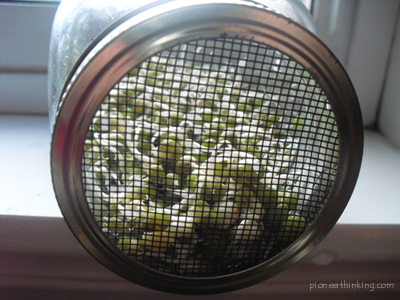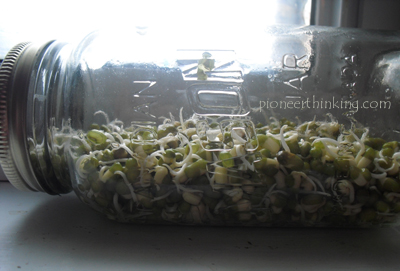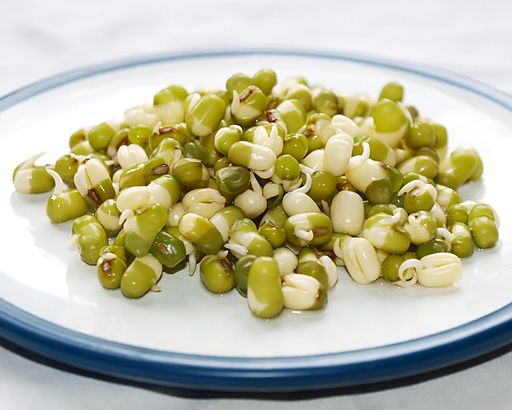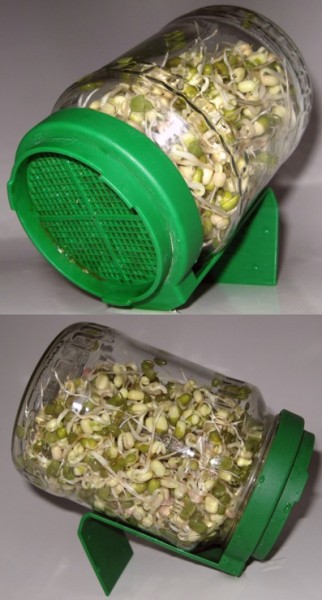One of the blessings of sprouts is that all you need is one square foot of space to enjoy a wide variety of healthy, fresh-grown veggies, grown in less than a week.
The possibilities go far beyond alfalfa and mung beans and it takes just a jar and some porous materials to create a delicious complement to wild recipes.
You need organic seeds from the health food store. Planting seeds from the garden supply store are often treated with chemicals.
I have successful sprouted seeds in a 500-square-foot apartment. This is a great way to bring the great outdoors inside, especially if you don’t have access to a traditional garden.

Materials:
* One quart size jar for each type of sprout
* Perforated lid or elastic bands
* Cheesecloth or screen, like nylon tulle from a fabric shop
* 4 tablespoons of each type of seed *
* Water
* Bowl or sink to prop jar
NOTE: Select two or three types of seeds
4 tablespoons of dry seed yields a quart of sprouts
Seed list:
- Alfalfa
- Barley
- Broccoli
- Cabbage
- Chickpeas
- Corn
- Fenugreek
- Lentils
- Mung beans
- Peas
- Quinoa
- Soy beans

Procedure:
1. Sort dry seeds, removing damaged or broken seeds
2. Rinse seeds, placing one variety in each jar
3. Add 1 cup cool water, cover and soak seeds 4-8 hours,
3. Rinse twice a day – refill with cool water, swirl, drain
4. Cover jar, invert and prop at an angle in bowl or sink
5. Watch for roots to grow from seeds
6. Seeds are edible when roots are 1/4-inch to 1-inch
Eat fresh, refrigerate any uneaten sprouts – you do not need a dark place to sprout seeds (some people claim seeds sprouted in darkness taste better), but drainage is essential.
NOTE: Your sprouts should not have an odor.
If they do, ensure that you began with organically grown seeds and that all seeds chosen for sprouting were perfectly shaped, ensure that your seeds are draining; remove any seeds with broken roots. Beyond that, once seeds have sprouted, eat them. The chemical process changes when roots become too long. It also changes when sprouts are older than 7-10 days. I have not tried freezing sprouts.

Other Possibilities:
Try cooking with sprouts – stir fry, sauté – or bake at a low temperature.
The Author:
For a half-century, writer and passionate naturalist JJ Murphy, has been providing nature programs, original curricula, articles, product reviews, books and open discussion to children and eco-aware adults across the USA.
